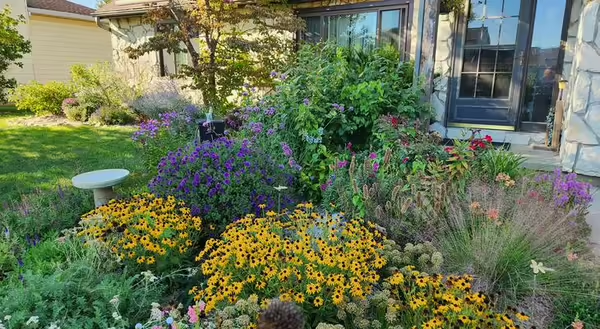
Pruning perennial flowers takes a garden from looking fair to fabulous. Deadheading, cutting back, and pinching are all pruning techniques that can keep perennial plants looking well cared for, healthy, and colorful.
Pruning perennials is a complex topic because different plants need different kinds of pruning. Experience, developed with practice and close observation of the plants, helps to determine when and what type of pruning is required.
Luckily, perennial plants are forgiving, so experimenting usually won't cause permanent damage. Leggy plants, ragged leaves, or new growth at the base of the plant are signs that the plant is ready for pruning.
Deadheading
Many perennials bloom for three weeks or less. Deadheading is one way to encourage a longer bloom time in certain species. After flowering, the plant puts a lot of energy into making seeds to complete its life cycle. Removing the flowers forces the plant to put more into making new flowers.
Deadheading techniques depend on the species. Due to different growth habits, some plants require deadheading to the next flower, bud, or leaf, while others need to remove the flower stalk.
Well-known perennials such as butterfly weed (Asclepias tuberosa), coreopsis, purple coneflower (Echinacea purpurea), scarlet bee balm (Monarda didyma), garden phlox (Phlox paniculate), and Culver's root (Veronicastrum virginicum) should be deadheaded to the next lateral flower, bud or leaf to encourage a longer time for blooms.
Cutting back
Increasing plant vigor, delaying bloom time, and controlling height are some reasons for cutting back perennials. Cutting back when foliage looks ragged and new growth is starting at the plant's base can rejuvenate the plant's appearance.
The renewed growth also helps keep the plant healthy. Removing older, worn foliage with healthy new foliage can increase the plant's life expectancy by reducing stress.
Cutting the plant back can also delay bloom time or manage plant height. With some plants, cutting back can encourage a second bloom. It is best to cut back the whole plant at one time. With continuous flowering, a perennial can use all its energy for flowers this season with nothing left to make flower buds next season.
Some species can tolerate cutting back better than others. It is essential to pay close attention to the signs that cutting back would be beneficial. Cutting back more than half of the foliage can put the plant under some stress, so be sure to give the plant some extra attention until new growth begins.
Perennials such as sedum (Hylotelephium spectabile), asters, cardinal flower (Lobelia cardinalis), and golden rod (Solidagos) can all benefit from cutting back early in the summer.
Pinching
Pinching can cause a plant to produce more but smaller flowers by removing the central flower bud. On the other hand, pinching away side buds can force the plant to put more energy into one large flower.
Perennials such as asters, yarrow (Achillea millefolium), chrysanthemums (Chrysanthemum x morifolium), rudbeckia, and goldenrods (Solidago hybrids) can be pinched back to benefit the plant.
Another benefit of pinching specific stems is increased air circulation through the plant. Increased air circulation helps to reduce the likely hood of infection by disease. Removing disease or injured stems by pinching also helps to keep the plants healthy.
Try some of these pruning techniques to keep your perennials looking great all season long.